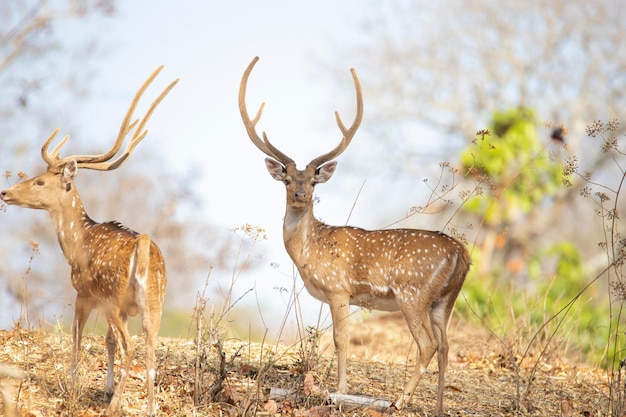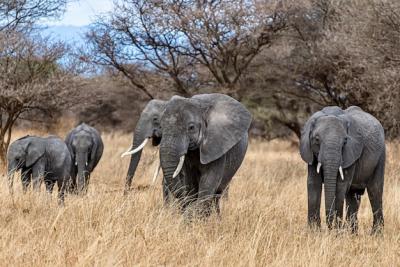Spotted Deer in the Forest – Free Stock Photo, Download for Free
Spotted Deer: A Glimpse into Nature's Beauty
The spotted deer, also known as chital or axis deer, is a magnificent creature often found in the lush forests of India and surrounding regions. This file captures the serene presence of these graceful animals standing confidently in their natural habitat.
The Anatomy of the Spotted Deer
Spotted deer are easily recognizable by their unique coat, which features white spots on a rich brown background. These markings offer great camouflage among the forest foliage. Here are some interesting facts about their appearance:
- Size: Adult spotted deer typically weigh between 40 to 80 pounds.
- Horns: Males develop antlers that can grow up to 3 feet long.
- Coloration: Their fur changes with the seasons, often becoming brighter in the summer.
Habitat and Behavior
These deer thrive in various habitats ranging from grasslands to dense forests. They are known for their social behavior, often seen in herds. Here are a few key points about their lifestyle:
- Diet: Spotted deer are herbivores, grazing on grass, leaves, and fruits.
- Habits: They are most active during the early morning and late afternoon.
- Communication: Spotted deer communicate using various vocalizations and body language.
The Importance of Spotted Deer in Ecosystems
Spotted deer play a vital role in their ecosystem. Their grazing helps maintain a healthy balance in the vegetation. Additionally, they serve as prey for larger predators, which contributes to the natural food chain.
Conservation Efforts
Protecting the spotted deer is essential for preserving biodiversity. Many organizations are working towards their conservation. Key measures include:
- Protected Areas: Establishing national parks and wildlife sanctuaries.
- Public Awareness: Educating people about the importance of wildlife conservation.
- Research: Conducting studies to monitor populations and health of deer species.
Conclusion
This file showcasing the spotted deer represents not only the beauty of these creatures but also highlights the importance of preserving their habitat. By appreciating and protecting these animals, we contribute to a healthier and more diverse environment for future generations.












